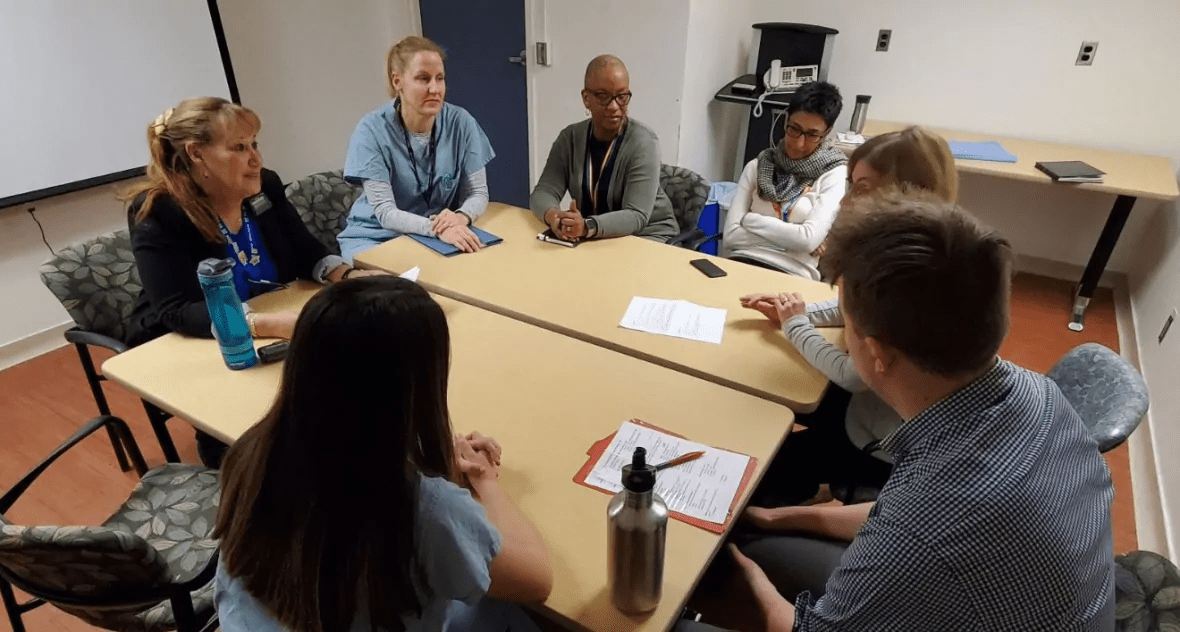VHA celebrates one year of reducing hallway medicine on Sunnybrook’s ED One team

Stacie London (far centre) and members of the ED One team at a daily huddle. Photo credit: Paul Smith/CBC
On October 28th, 2019, a new program made its debut in the emergency department of Sunnybrook Health Sciences Centre.
The program is known as ED One, and it was created with one primary goal – to reduce the number of seniors receiving care in the hospital hallway and get them home safely. To accomplish this goal, a streamlined interdisciplinary team was formed to assess patient needs and connect patients with the necessary supports to stay healthy in the community. VHA Home HealthCare (VHA) has been an essential piece of this puzzle since day one.
“The ED One program allows patients who may have otherwise been admitted to hospital to return home more quickly with added supports,” says VHA’s Sandra Wilczynska, Home Care Navigator with ED One.
“By supporting these patients, we alleviate the stress on the Emergency (ED) department and free up hospital beds.”
The ED One team consists of both a hospital and community social worker, geriatric emergency medicine nurse, physiotherapist, occupational therapist, community care coordinator, psychogeriatric case manager, a community mental health specialist and staff from home care agencies VHA, Spectrum Health Care and SE Health.
After a daily huddle to discuss cases, the team usually works with an average of eight to 10 patients a day.
“We bring the expertise of the community to the hospital environment and help the whole team get a better sense of patient life after discharge,” says ED One team member Stacie-Ann London, RPN and VHA Personal Support Supervisor.
“I love seeing everyone come together, come up with a plan and work through it to get the patient home,” she adds.
Stacie recalls one of many great patient outcomes she’s witnessed as part of the ED One team.
“This particular patient was very reclusive in his home until he came to the hospital after a fall,” says Stacie.
“After assessing and speaking with him, we realized he was also experiencing some short-term memory loss in addition to visual impairment. He was medically cleared to be discharged, but needed additional supports to function safely at home,” says Stacie.
Stacie coordinated a VHA Personal Support Worker (PSW) to help him get settled at home, including transportation, medication, meals, and bathing.
“He called me several time after his discharge to let me know how happy he was to have help from the PSW,” Stacie added, and mentioned that he eventually went on to receive LHIN-funded support five days a week.
In its first five months, the team showed a decrease of 323 admissions, or 2.1 per day, compared to the same time period the previous year, says Will Thomas-Boaz, advanced practice nurse for Sunnybrook’s emergency department and trauma program, who also develops quality improvement initiatives with ED One.
The ED One team initially started as a six-month pilot program, but was extended beyond a year after delivering great results. With such positive patient stories and meaningful outcomes, the team’s hope is that the ED One team can continue to make a positive difference for many more years to come.
